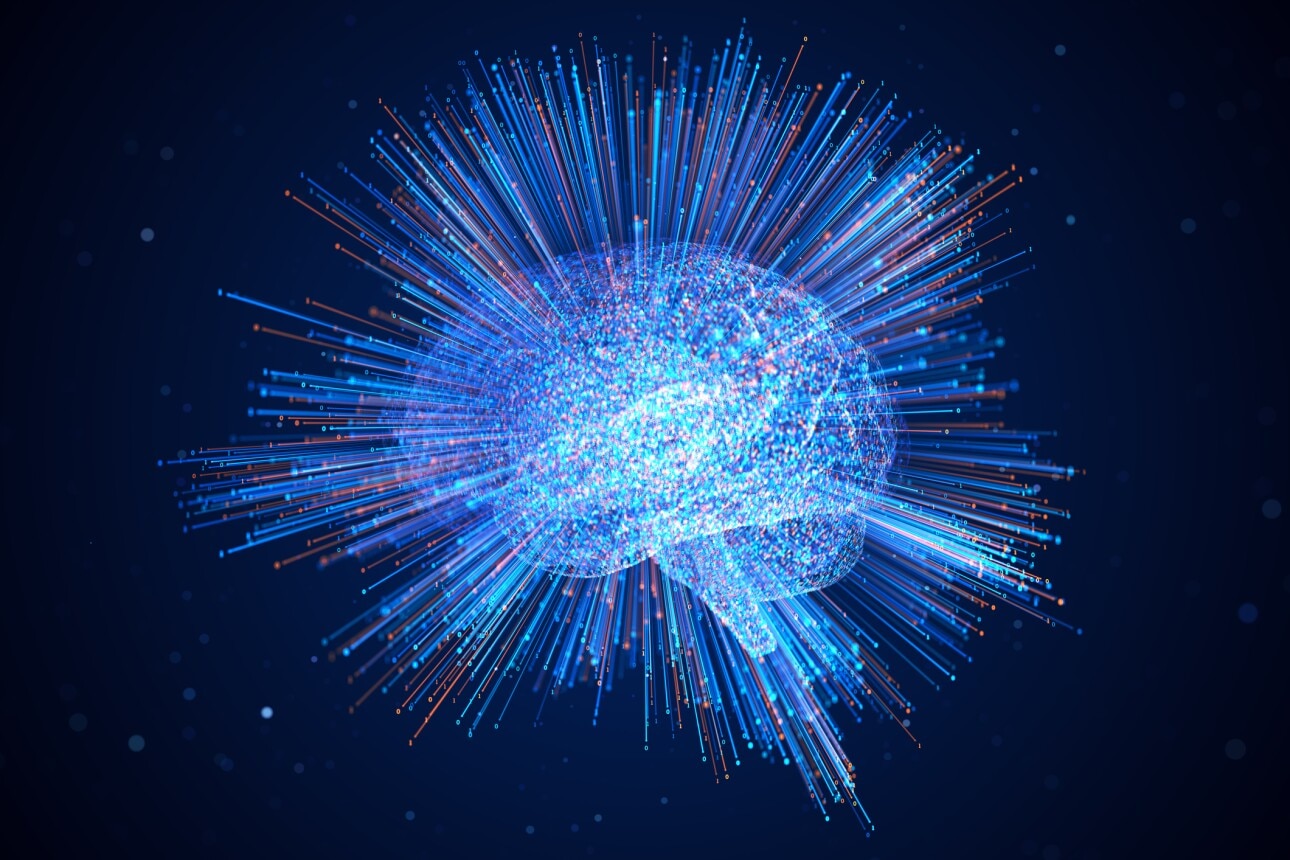Retrieval Augmented Generation (RAG) is an AI technique that enhances large language models (LLMs) by combining their inherent knowledge with real-time information retrieval from external databases.
This approach allows generative AI models to generate more accurate, up-to-date, and contextually relevant responses by grounding their outputs in current, verifiable data.
As AI continues to integrate into various aspects of our lives, from business decision-making to personal assistants, the need for up-to-date, accurate information becomes increasingly critical. RAG addresses this need by bridging the gap between the vast knowledge of language models and real-time, factual information.

Key Takeaways
- RAG enhances generative artificial intelligence models by combining language generation with real-time information retrieval, significantly reducing errors and hallucinations.
- This technique enables AI systems to provide up-to-date, verifiable information, crucial for maintaining trust in AI-driven decision-making.
- Implementing RAG improves AI performance across various applications, from chatbots and search engines to question-answering systems and text summarization.
Understanding RAG
By grounding AI responses in external data sources, RAG addresses key limitations of traditional language models, such as outdated information and hallucinations. Imagine RAG as a highly efficient research assistant. When asked a question, it doesn't just rely on its memory (like traditional AI models) but actively searches through a vast library of up-to-date information to provide the most accurate and relevant answer possible. This approach allows AI systems to stay current with rapidly changing information and provide more contextually appropriate responses.

The Importance of RAG: A Cautionary Tale
Imagine a busy executive preparing for a crucial meeting with a potential investor. Pressed for time, they turn to an AI assistant to gather some last-minute facts about their industry. They ask, "What was the growth rate of the renewable energy sector last year?" The AI confidently responds, "The renewable energy sector experienced a robust growth rate of 15.7% last year, outpacing traditional energy sources by a significant margin." Impressed by this specific figure, the executive includes it in their presentation. However, during the meeting, the potential investor questions the number, stating that their sources indicate a growth rate of only 8.3%.
This scenario illustrates a common problem with traditional LLMs: hallucinations. LLMs can sometimes generate plausible-sounding but incorrect information, especially when dealing with specific, recent, or rapidly changing data.
This is where RAG becomes crucial. If the AI assistant had been using RAG:
- It would have searched a continually updated database for the most recent and accurate information about renewable energy growth rates.
- If the exact figure wasn't available, it might have provided a range based on multiple reliable sources, or explicitly stated that it didn't have current data.
- The response could have included the source of the information and the date it was last updated.
This example underscores why RAG is so important:
- It prevents misinformation: by grounding responses in retrievable facts, RAG significantly reduces the risk of AI hallucinations
- It maintains trust: users can rely on RAG-enhanced AI for up-to-date and accurate information, crucial for business decisions.
- It provides transparency: RAG allows the AI to cite sources, enabling users to verify information independently.
As AI becomes more integrated into our daily work and decision-making processes, the ability to provide accurate, current, and verifiable information becomes not just helpful, but essential. RAG is a key technology in achieving this goal, bridging the gap between the vast knowledge of LLMs and the need for reliable, real-time information.

Key Components of RAG
RAG systems rely on several essential elements working together to provide enhanced AI capabilities:
Language Models
Large language models like GPT-3, GPT-4, and BERT form the core of RAG systems. These sophisticated AI models are trained on vast amounts of text data, allowing them to understand and generate human-like responses.
In RAG frameworks, they're responsible for:
- Understanding user queries
- Synthesizing information from retrieved data
- Generating coherent and contextually appropriate responses
Databases and Information Retrieval Systems
External knowledge bases store structured and unstructured information that can be quickly accessed and retrieved. These databases are crucial for providing up-to-date and specific information that may not be present in the language model's training data.
Key aspects include:
- Efficient storage of large volumes of data
- Fast query processing and retrieval systems
- Support for various data types (text, images, metadata)
Information retrieval systems play a vital role in identifying and extracting relevant data from these databases. Common retrieval methods include:
- Keyword search
- Vector search
- Semantic search
- BM25 algorithm for ranking relevant documents
Vector Representation and Indexing
"Vectorizing" data is foundational to modern RAG systems. It involves converting text data into numerical vectors, enabling vector search and efficient similarity comparisons. Key features include:
- Generation of embeddings using pre-trained models
- Dimensionality reduction techniques for compact representation
- Similarity measures like cosine similarity for comparing vectors
A vector database is a specialized system designed to store and query these vector representations efficiently. They offer:
- Fast nearest neighbor search capabilities
- Scalability for handling large datasets
- Support for complex query operations
Indexing techniques, such as approximate nearest neighbor (ANN) algorithms, can further enhance retrieval speed and efficiency in RAG systems.

How RAG Works
The RAG process involves several sophisticated steps to retrieve data and generate accurate, contextually relevant responses:
Step 1: The Retrieval Process
When given a query or prompt, the system searches an external knowledge base to find relevant information. This knowledge base can be a document collection, database, or other structured data source.
RAG uses advanced retrieval algorithms to identify the most pertinent information. These algorithms may employ techniques like semantic search or dense vector retrieval. The goal is to find contextually relevant data that can improve the language model's response.
Step 2: RAG Architecture and Model Training
A functional RAG architecture combines an encoder component, retriever component, and generator component. Here's how they work together:
- Encoder: converts input queries into vector representations
- Retriever: searches the knowledge base using the encoded query
- Generator: creates the final response using retrieved information
During training, RAG models learn to balance information from their internal knowledge (pre-training) with external retrieved data. This process improves the model's ability to generate accurate and contextually relevant responses.
Step 3: Reranking and Attention Mechanisms
After initial retrieval, RAG systems often employ re-ranking to further refine the relevance of retrieved information. This step helps prioritize the most valuable pieces of data for the final generation process. Re-ranking may use:
- Relevance scores
- Semantic similarity measures
- Context-specific heuristics
Attention mechanisms play a crucial role in RAG by deciding which parts of the retrieved information are most important for generating the response. These systems allow the model to focus on specific pieces of retrieved data when crafting its output.
Attention in RAG helps the model:
- Weigh the importance of different retrieved passages
- Integrate external knowledge with its internal understanding
- Generate more coherent and contextually appropriate responses
By combining these steps, RAG systems can produce higher-quality outputs that are both factually correct and contextually relevant.
Applications of RAG
RAG enhances AI systems across various domains, improving accuracy and relevance in information processing and generation tasks:
Chatbots and Conversational AI
RAG significantly improves chatbots and conversational AI by providing more accurate and contextually relevant responses. These systems can access external knowledge bases to supplement their trained knowledge, allowing them to handle a wider range of user queries effectively.
RAG-powered chatbots can:
- Provide up-to-date information
- Offer detailed explanations
- Maintain consistency across conversations
This technology is particularly valuable in customer service, where chatbots can quickly retrieve specific product details or troubleshooting steps. It also enables more natural and informative dialogues in virtual assistants, making them more helpful and engaging for users.
Major AI providers like Anthropic, Google, and OpenAI have developed templates for creating RAG chatbots. These templates allow developers to build chatbots that combine advanced search engine capabilities with generative models, making it easier to develop applications that can handle complex queries and provide intelligent responses without requiring extensive custom model training.
Search Engines and Semantic Search
By combining the power of generative AI with information retrieval, search engines can provide more accurate and contextually relevant results. Key benefits include:
- Improved understanding of user intent
- Enhanced ranking of search results
- Generation of concise summaries for search snippets
RAG allows search engines to go beyond keyword matching, interpreting the semantic meaning behind queries. This leads to more intuitive search experiences, where users can find relevant information even when their search terms don't exactly match the content they're seeking.
Question-Answering Systems
RAG can be used to build internal tools that answer questions, even complex ones normally fielded by a human. Advantages of RAG in question-answering include:
- Access to up-to-date information
- Ability to cite sources
- Handling complex, multi-part questions
RAG-powered systems answer questions most impressively in fields like medical diagnosis, support, legal research, and educational platforms. They can quickly retrieve relevant facts from vast databases and generate coherent, informative responses tailored to the user's specific question.
RAG and Text Summarization: a Real-World Example
RAG-powered summarization tools are particularly useful in fields like journalism, academic research, and business intelligence.
While many LLMs like GPT-4 can summarize a body of text, tools without RAG capabilities struggle to contextualize that text within a larger knowledge base or a field with deep domain-specific data.
Imagine a journalist working on a breaking news story about a new medical breakthrough in cancer treatment.
They need to quickly summarize a dense 50-page research paper and contextualize it within the broader field of oncology. Here's how a RAG-powered summarization tool could help:
- The journalist inputs the research paper into the RAG-enhanced summarization tool.
- The tool processes the paper and generates a query or set of queries based on its content.
- Using vector search, the system queries its database to find relevant information:
- Up-to-date medical journals
- Previous news articles
- Expert opinions on cancer treatments
- Background on cancer research milestones
- Statistics on current cancer treatment efficacy rates
- The RAG system retrieves and ranks the most relevant external information.
- The tool then generates a summary, incorporating both the original paper and the retrieved external information:
- It creates a basic summary of the paper's key points
- It integrates background information on previous cancer research milestones
- It explains complex medical terminology, making it accessible to a general audience
- It includes comparisons with current cancer treatment efficacy rates
- It incorporates expert opinions on the potential impact of the new treatment
The final output is a comprehensive, contextualized report that:
- Explains the breakthrough in layman's terms
- Compares it to existing treatments
- Provides expert opinions on its potential impact
- Situates the discovery within the broader landscape of cancer research
This RAG-enhanced summary allows the journalist to quickly understand and communicate the significance of the research, even without deep expertise in oncology. It saves time, improves accuracy, and provides a richer, more informative basis for their news articles.
By leveraging both the content of the original paper and relevant external sources, the RAG-powered tool produces a summary that is more valuable and insightful than what could be achieved through traditional summarization techniques alone.

Challenges and Limitations
Implementing RAG systems can involve significant computational and financial costs, particularly when dealing with large-scale data retrieval and processing. Here are some other potential hurdles when implementing RAG technology:
Dealing with Ambiguity and Hallucinations
Even with RAG safeguards in place, generative AI systems can still struggle with ambiguous queries or conflicting information in retrieved data. This may lead to hallucinations - outputs that seem plausible but are factually incorrect or nonsensical.
To mitigate this, implement robust fact-checking mechanisms, use multiple data sources for cross-verification, and employ confidence scoring for generated content.
Maintaining Reliability and User Trust
Building and maintaining user trust is critical for RAG adoption. Inconsistent or incorrect responses can quickly erode confidence in the system. Key strategies include telling users about the system's limits, giving citations or sources for information, and letting users give feedback on responses.
Security and Data Privacy Considerations
RAG systems often access large databases, raising concerns about data security and privacy. Protecting sensitive information while maintaining system functionality is a delicate balance.
Important safeguards include strict access controls and encryption for data stores, anonymization of personal information in training data, and regular security audits and penetration testing.

Technical Infrastructure for RAG
Implementing RAG requires robust technical foundations:
Hardware and Software Requirements
RAG systems demand significant computational resources. High-performance processors and ample memory are essential for handling large language models and retrieval operations simultaneously. GPU acceleration often proves crucial for efficient model inference.
On the software side, specialized frameworks facilitate RAG implementation. Popular choices include Hugging Face Transformers and LangChain.
Scaling with Cloud Services and APIs
APIs play a crucial role in RAG systems, enabling seamless integration of various components. They allow access to open-source pre-trained language models, document stores, and vector databases.
Popular open-source tools like Apache Kafka for data streaming, Elasticsearch for document storage and search, and FAISS (Facebook AI Similarity Search) for efficient similarity search in dense vectors can be integrated via APIs to build robust RAG systems.
Final Thoughts
Retrieval Augmented Generation (RAG) is a big improvement in AI technology. It solves the main problems of traditional large language models by using vector search and generative AI.
This approach enables more accurate, contextually relevant, and up-to-date AI-powered applications across various industries.
Platforms like InterSystems IRIS® facilitate RAG implementation by offering integrated vector capabilities, high-performance processing, and flexible AI integration within a secure, enterprise-ready environment.
With its ability to handle both structured and unstructured data in a unified system, InterSystems IRIS simplifies the architecture required for RAG while providing robust tools for AI orchestration and auditing.
As AI evolves, RAG will continue to be a foundational technology for creating more reliable, efficient, and intelligent systems. We're right on the cusp of some incredible innovation in fields ranging from advanced chatbots and semantic search engines to complex data analysis tools.
By using RAG and platforms like InterSystems IRIS, organizations can build AI solutions that aren't only more powerful and accurate but also more trustworthy and adaptable to real-world needs.
Frequently Asked Questions About RAG
Retrieval-augmented generation (RAG) enhances AI language models by incorporating external knowledge sources. This innovative approach improves accuracy, reduces hallucinations, and expands the model's capabilities across various applications.
This integration allows AI systems to access up-to-date information and provide more accurate responses. RAG enhances tasks such as question answering, text summarization, and content generation.
Next, the system must be configured to perform low-latency retrieval during inference. Finally, the retrieved information is integrated with the language model's output to generate accurate and contextually relevant responses.
This approach allows RAG systems to access more current and specific information, reducing the risk of outdated or incorrect outputs. It also enables the model to provide more detailed and contextually appropriate responses.
RAG also enhances chatbots and virtual assistants, improving their ability to engage in contextually relevant conversations. Additionally, it is used in content generation, document summarization, and information retrieval systems.
The retrieval component of RAG uses deep learning methods for embedding generation and similarity search. This combination allows RAG to benefit from both the generative capabilities of deep learning models and the precision of information retrieval systems.






























